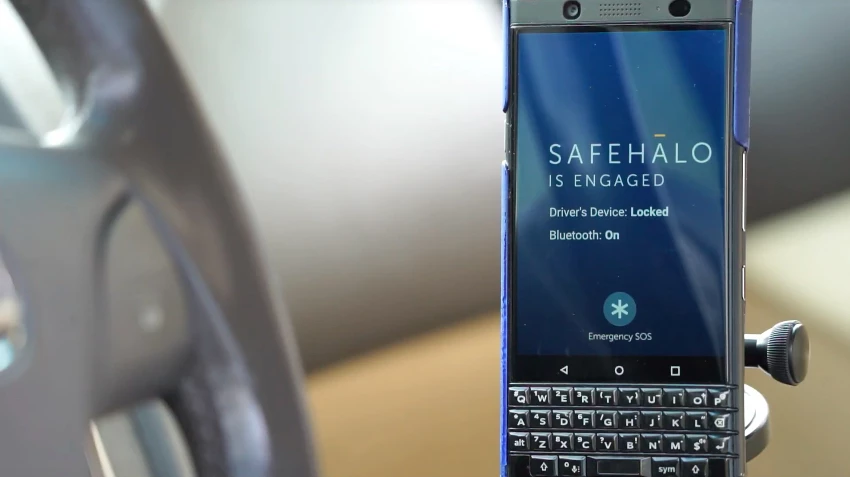It's no secret that a great deal of car accidents are now caused by distracted drivers who are calling or texting on their smartphones. The SafeHalo system is designed to address that problem by disabling a phone if it's on or near the driver's seat, but leaving it be if it's not.
Developed by Calgary, Canada-based 4D Driving Technologies, SafeHalo consists of three main components: a "telemetry hub" module that's plugged into the car's OBD-II diagnostic port, a small beacon device that's discretely placed on the passenger side of the cabin, and an iOS/Android app. All of these wirelessly communicate with one another via Bluetooth.
If the driver is travelling alone, the beacon isn't needed or used. In this case, as soon as the hub detects that the engine has started and the car has been put in gear, it causes the app to block all incoming calls and texts, and to disable the ability to place them – the exception is outgoing emergency 911 calls, which are still possible.
Should other passengers be present, though, then the beacon is used to triangulate the location of the phone within the cabin, based on the received strength and direction of its Bluetooth signal. If it's determined that the phone is in the immediate vicinity of the driver's seat, then calls and texts are still blocked. Once that phone is passed to a passenger in another seat, though, it gets unlocked, allowing that person to use it on behalf of the driver.

And no, the sort of person who texts and drives in the first place likely won't be keen to use the system on themselves. Instead, it's mainly intended to be purchased and installed by people such as parents or employers, to keep their children or fleet drivers from using their phones irresponsibly. And if a driver should try deleting the app or unplugging the hub, the parent/employer will be notified via the app on their phone.
4D's VP of business development tells us that SafeHalo should be commercially available before Christmas, priced somewhere below CAD$100 (about US$75) per year. Interested parties can register for updates via the "Source" link below the following demo video.
As a side note, we have seen some similar products before, although Scosche's cellCONTROL system appears to no longer be available, ORIGOSafe requires the phone itself to be physically plugged into it, and the TXTBlocker app is specific to texting.
Source: 4D Driving Technologies




